The Pictus Catfish (Pimelodus pictus) is an interesting fish that makes a great addition to many home aquariums. Its scientific name comes from the Latin words “pimelodus” meaning “fat” and “pictus” meaning “painted”, referring to the catfish’s spotted pattern.
Table of Contents
Pictus catfish are part of the Pimelodidae family, which contains over 100 species of long-whiskered catfish. Some of their close relatives include Raphael catfish, three stripe catfish, and sailfin catfish. In the wild, pictus catfish are found in the Amazon River basin in South America.
An interesting fact about pictus catfish is that they are nocturnal, meaning they are most active at night. During the day, they often hide among plants or decorations in the aquarium. They are mid-level to bottom dwelling fish that prefer dim lighting.
When it comes to diet, pictus catfish are omnivores and not picky eaters. In the wild, they eat insects, crustaceans, worms, plant matter, and detritus. In aquariums, they readily accept most prepared foods like flakes, pellets, and frozen foods. To keep them healthy, offer a varied diet and feed small amounts 2-3 times per day.
Pictus catfish are generally peaceful fish but may eat very small fish that can fit in their mouths. Good tank mates include other peaceful, medium-sized fish like tetras, rasboras, gouramis and other catfish. A school of at least 5-6 pictus catfish is ideal. They grow to about 4-5 inches (10-13 cm) long.
In addition to their spotted pattern, pictus catfish have long barbels (whiskers) that help them find food in dark or murky water. They also have an adipose fin, which is a small fleshy fin located between the dorsal fin and tail.
Pictus catfish have been popular in the aquarium hobby since the 1950s. They are hardy, undemanding fish that adapt well to a variety of water conditions. This, along with their peaceful nature and interesting appearance, makes them an appealing choice for both beginners and experienced fish keepers.
Overall, pictus catfish are fascinating fish that are fun to observe and make great additions to community aquariums. By providing them with a proper environment and diet, they can thrive and bring joy to their owners for many years.
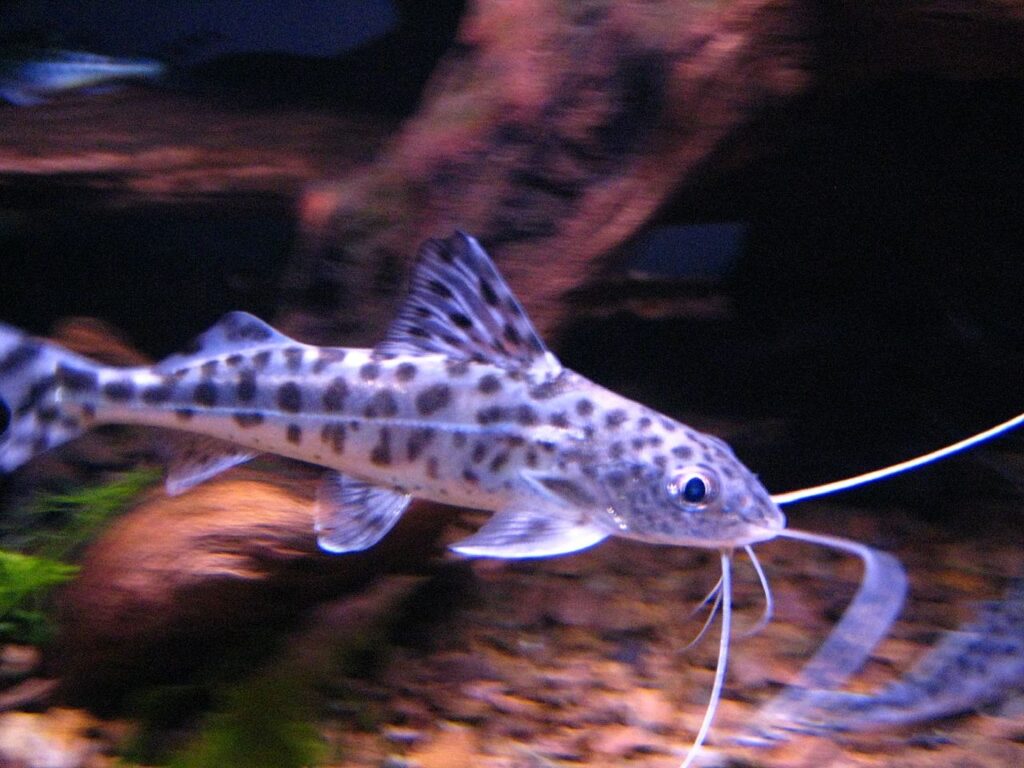
Pictus Catfish Key Information
The Pictus Catfish is a striking fish with a unique spotted pattern that sets it apart from other catfish species. Its body is covered in small, dark spots that contrast beautifully against its silvery-gray background. The spots are more concentrated on the upper half of the body and gradually become sparser towards the belly. The fins are transparent with a slight yellowish tint, and the barbels are white or pale yellow.
| Family | Pimelodidae |
| Origin | Amazon River Basin in South America |
| Price | $5 – $10 |
| Common Names | Pictus Cat, Angel Cat, Pictus Cat Shark |
| Variants | None |
| Ideal Tank Size | 55 gallons or larger |
| Water Parameters | Temperature: 75-81°F (24-27°C), pH: 6.5-7.5, Hardness: 5-15 dH |
| Lifespan | 8-10 years |
| Full Size | 4-5 inches (10-13 cm) |
| Natural Environment | Rivers and streams with moderate to strong currents |
| Behavior | Peaceful, nocturnal, schooling |
| Habitat Preference | Mid-level to bottom dweller, prefers hiding spots and dim lighting |
| Aquarium Decoration | Driftwood, rocks, caves, live or artificial plants |
| Ideal Tank Mates | Other peaceful, medium-sized fish like tetras, rasboras, gouramis, and other catfish |
| Fish to Avoid | Very small fish that can fit in their mouths, aggressive fish |
| Best Foods/Diet | Omnivorous, accepts most prepared foods like flakes, pellets, and frozen foods |
| Disease | Susceptible to common aquarium diseases if water quality is poor |
| Sex-Switch | No |
| Gender Differences | Difficult to distinguish, females may be slightly larger and more rounded |
| Care Level | Easy |
| Breeding Level | Moderate, requires specific conditions and hormone injections |
Ideal Tank Mates for Pictus Catfish
Choosing the right tank mates for Pictus Catfish is of utmost importance. Consider their peaceful nature, size, and habitat requirements when making your selection. Pictus Catfish flourish when paired with non-aggressive fish that are similar in size and share similar water preferences. Discover the ideal companions for your Pictus Catfish from our curated list of 10 perfect tank mates, complete with compatibility information.
1. Black Skirt Tetras (Gymnocorymbus ternetzi)
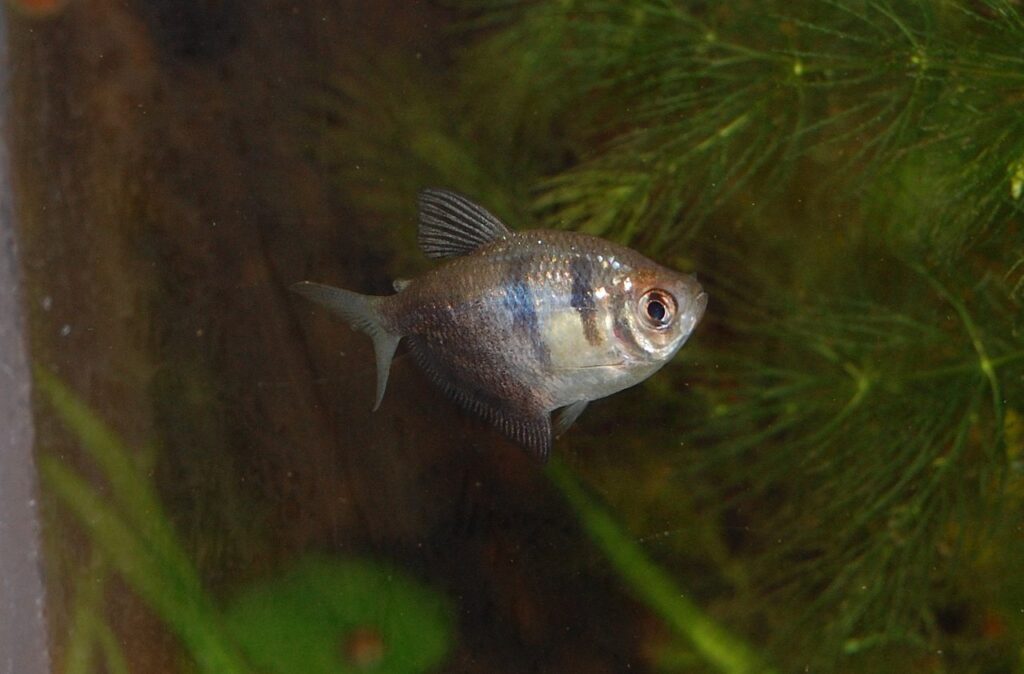
Black Skirt Tetras make excellent tank mates for Pictus Catfish because they occupy the upper levels of the aquarium, while Pictus Catfish stay in the middle and lower levels. This helps create a balanced and visually appealing aquarium. Black Skirt Tetras are also peaceful schooling fish that won’t harass or nip at the Pictus Catfish’s long fins.
| Common/Market Names | Black Widow Tetras, Petticoat Tetras |
| Price Range | $2 – $4 |
| Care Level | Easy |
| Behavior | Peaceful, schooling |
| Life Span | 3-5 years |
| Max Size | 2.5 inches (6 cm) |
2. Corydoras Catfish (Corydoras spp.)
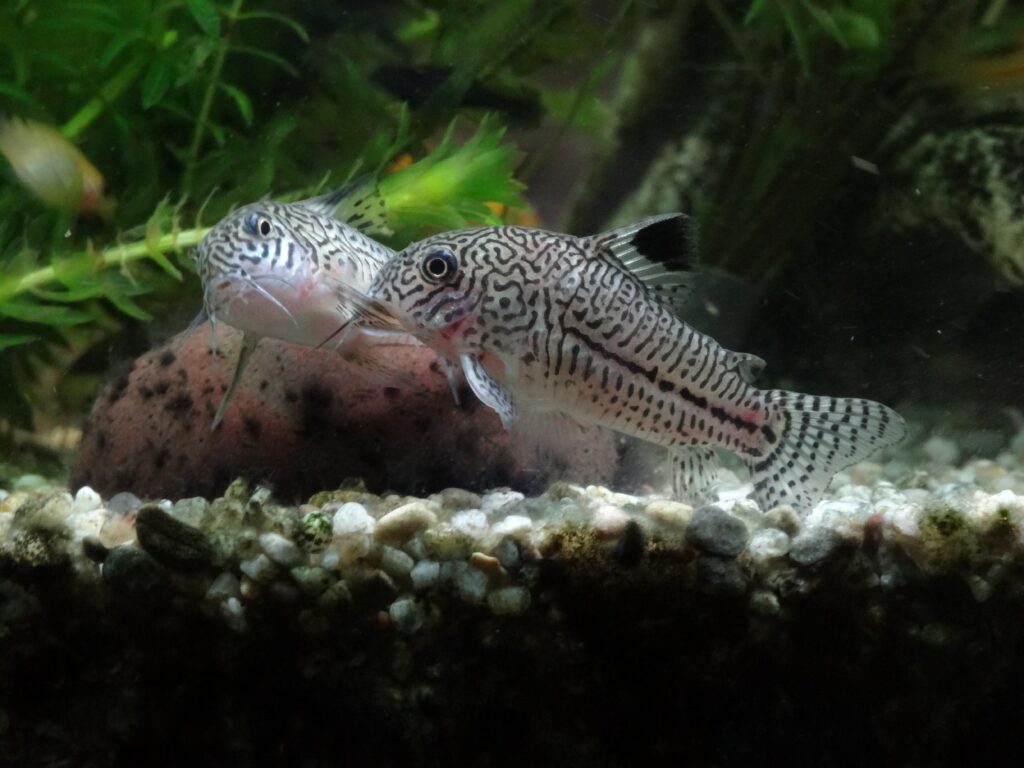
Corydoras Catfish are another great choice for Pictus Catfish tank mates. They are peaceful bottom-dwellers that help keep the substrate clean by scavenging for leftover food. Corydoras Catfish also have a similar size and temperament to Pictus Catfish, making them compatible tank mates.
| Common/Market Names | Cory Catfish, Cories |
| Price Range | $3 – $10 |
| Care Level | Easy |
| Behavior | Peaceful, schooling |
| Life Span | 5-7 years |
| Max Size | 1-3 inches (2.5-7.5 cm) |
3. Neon Tetras (Paracheirodon innesi)
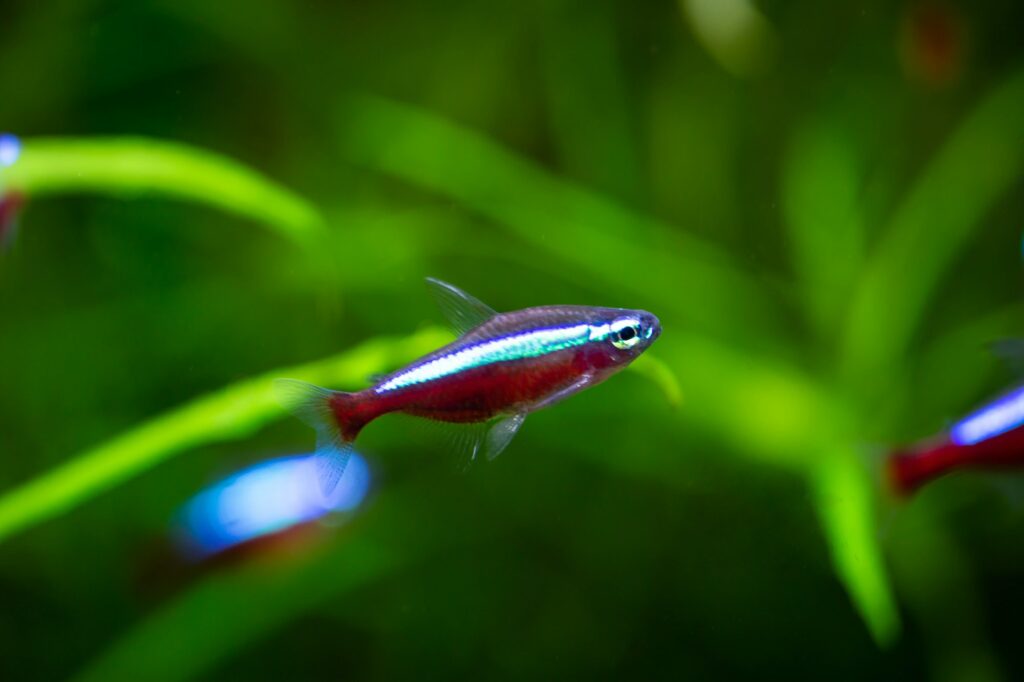
Neon Tetras are a popular choice for community aquariums due to their peaceful nature and bright colors. They occupy the upper levels of the aquarium and are too small to be considered food by adult Pictus Catfish. Neon Tetras prefer similar water conditions to Pictus Catfish, making them ideal tank mates.
| Common/Market Names | Neons |
| Price Range | $1 – $3 |
| Care Level | Easy |
| Behavior | Peaceful, schooling |
| Life Span | 5-8 years |
| Max Size | 1.5 inches (3.8 cm) |
4. Harlequin Rasboras (Trigonostigma heteromorpha)

Harlequin Rasboras are another peaceful schooling fish that make great tank mates for Pictus Catfish. They occupy the upper levels of the aquarium and have a unique triangular shape that adds visual interest to the tank. Harlequin Rasboras are also hardy fish that can adapt to a wide range of water conditions.
| Common/Market Names | Harlequin Fish, Red Rasboras |
| Price Range | $3 – $5 |
| Care Level | Easy |
| Behavior | Peaceful, schooling |
| Life Span | 5-8 years |
| Max Size | 2 inches (5 cm) |
5. Dwarf Gouramis (Trichogaster lalius)
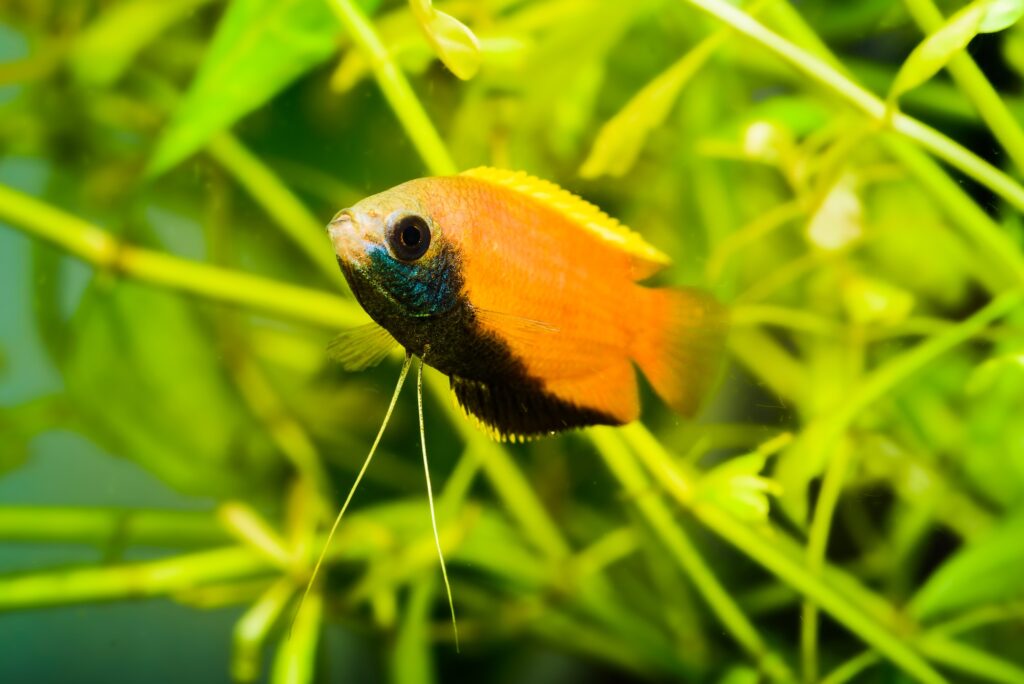
Dwarf Gouramis are colorful and peaceful fish that make great tank mates for Pictus Catfish. They occupy the upper levels of the aquarium and have a unique labyrinth organ that allows them to breathe air from the surface. Dwarf Gouramis are also relatively small, so they won’t compete with Pictus Catfish for food or space.
| Common/Market Names | Dwarf Gourami, Flame Dwarf Gourami, Powder Blue Dwarf Gourami |
| Price Range | $4 – $8 |
| Care Level | Easy |
| Behavior | Peaceful, territorial |
| Life Span | 4-6 years |
| Max Size | 3.5 inches (9 cm) |
6. Cherry Barbs (Puntius titteya)
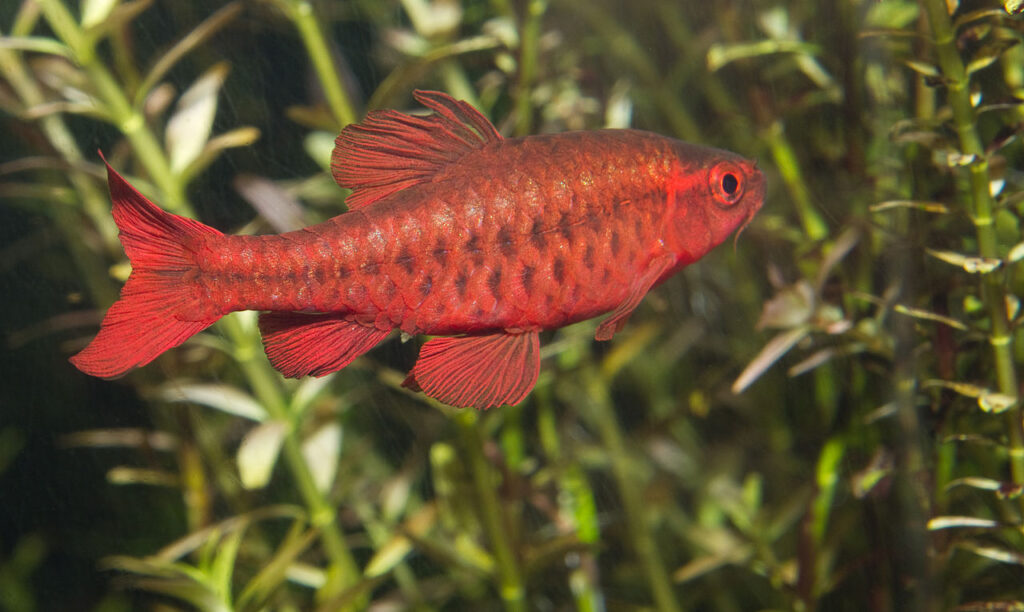
Cherry Barbs are peaceful and active fish that make great tank mates for Pictus Catfish. They occupy the middle levels of the aquarium and have a bright red coloration that adds a pop of color to the tank. Cherry Barbs are also hardy fish that can adapt to a wide range of water conditions.
| Common/Market Names | Red Barb, Cherry Barb |
| Price Range | $2 – $4 |
| Care Level | Easy |
| Behavior | Peaceful, schooling |
| Life Span | 4-6 years |
| Max Size | 2 inches (5 cm) |
7. Platies (Xiphophorus maculatus)
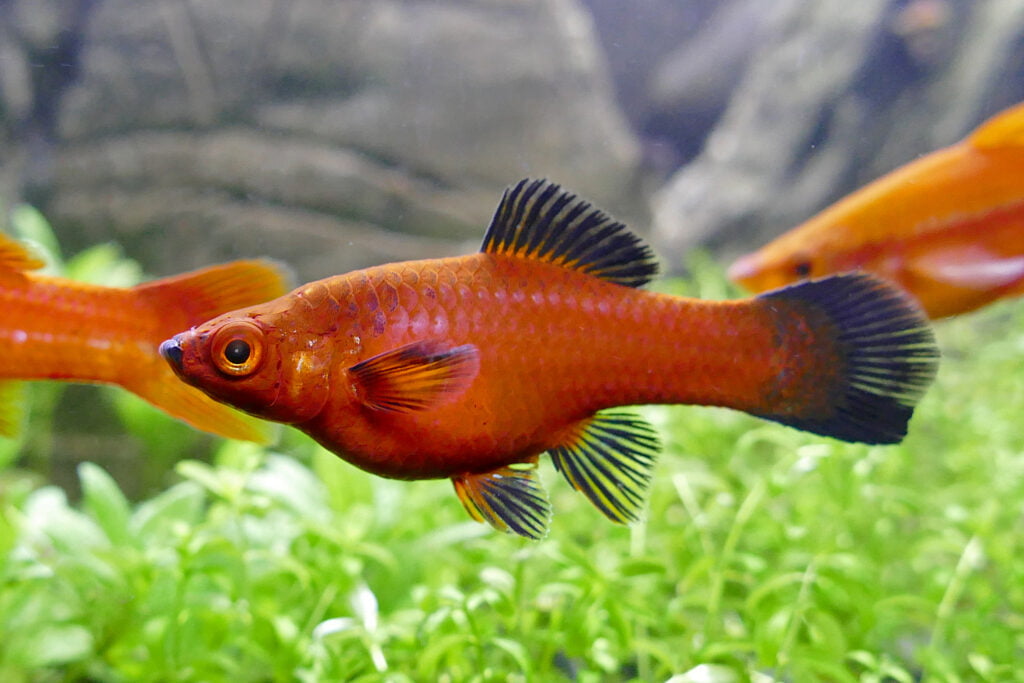
Platies are colorful and peaceful livebearers that make great tank mates for Pictus Catfish. They occupy the upper levels of the aquarium and come in a variety of colors and patterns. Platies are also hardy fish that can adapt to a wide range of water conditions and are easy to breed in captivity.
| Common/Market Names | Southern Platyfish, Mickey Mouse Platy |
| Price Range | $2 – $4 |
| Care Level | Easy |
| Behavior | Peaceful, active |
| Life Span | 3-5 years |
| Max Size | 2.5 inches (6 cm) |
8. Bristlenose Plecos (Ancistrus spp.)
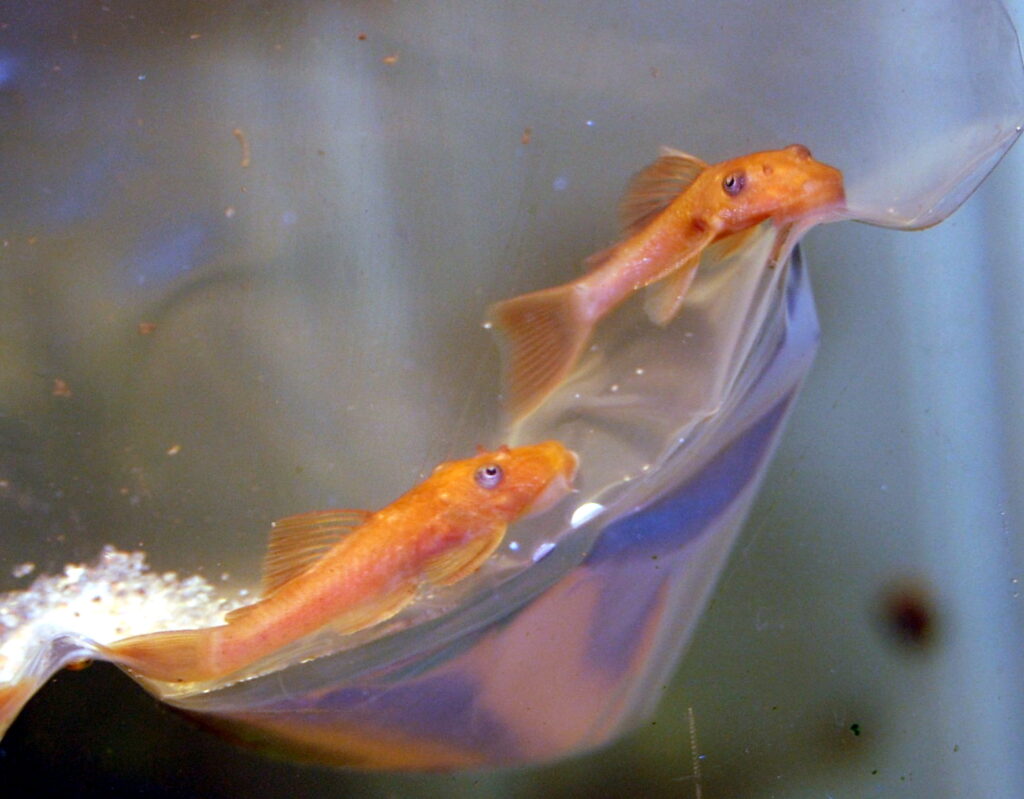
Bristlenose Plecos are peaceful bottom-dwellers that make great tank mates for Pictus Catfish. They help keep the aquarium clean by grazing on algae and leftover food. Bristlenose Plecos are also relatively small and have a unique appearance with bristle-like appendages on their nose.
| Common/Market Names | Bushynose Plecos, Bristlenose Catfish |
| Price Range | $5 – $10 |
| Care Level | Easy |
| Behavior | Peaceful, solitary |
| Life Span | 5-7 years |
| Max Size | 5 inches (13 cm) |
9. Rummy Nose Tetras (Hemigrammus bleheri)
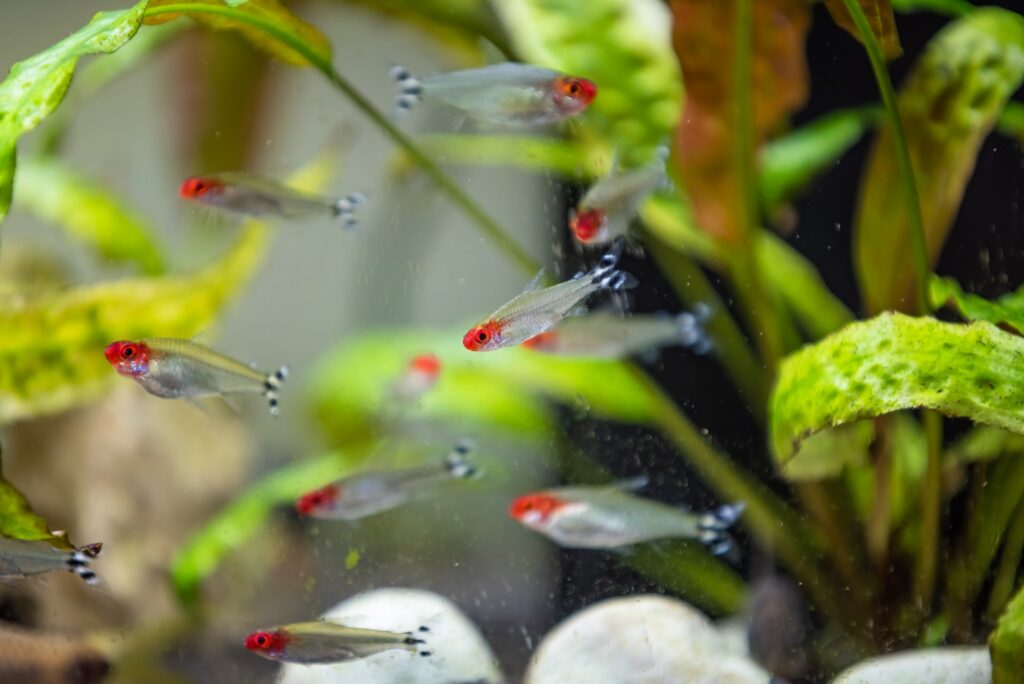
Rummy Nose Tetras are peaceful schooling fish that make great tank mates for Pictus Catfish. They occupy the upper levels of the aquarium and have a unique red and white coloration on their nose. Rummy Nose Tetras prefer similar water conditions to Pictus Catfish and are sensitive to changes in water quality, making them a good indicator species.
| Common/Market Names | Firehead Tetra, Red-Headed Tetra |
| Price Range | $3 – $6 |
| Care Level | Moderate |
| Behavior | Peaceful, schooling |
| Life Span | 4-6 years |
| Max Size | 2 inches (5 cm) |
10. Zebra Danios (Danio rerio)
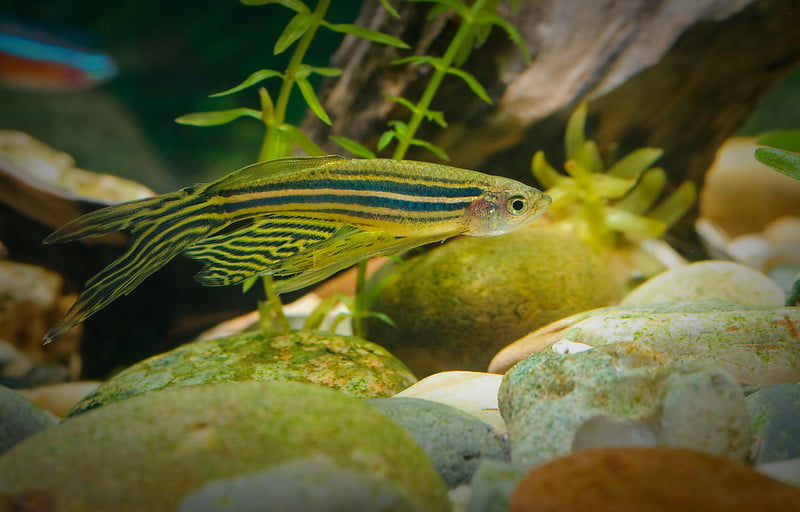
Zebra Danios are hardy and active fish that make great tank mates for Pictus Catfish. They occupy the upper levels of the aquarium and have a unique striped pattern that resembles a zebra. Zebra Danios are also easy to care for and can tolerate a wide range of water conditions, making them a good choice for beginners.
| Common/Market Names | Zebra Fish, Striped Danios |
| Price Range | $1 – $3 |
| Care Level | Easy |
| Behavior | Peaceful, active |
| Life Span | 3-5 years |
| Max Size | 2 inches (5 cm) |
FAQs about Pictus Catfish
How many Pictus Catfish should I keep together?
It’s best to keep Pictus Catfish in groups of at least 4-6 individuals. They are schooling fish and feel more secure when kept with others of their own kind. Keeping them in larger groups can also help reduce aggression and stress.
Can Pictus Catfish live with shrimp or snails?
Pictus Catfish are generally peaceful towards most tank mates, but they may prey on small shrimp or snails. If you want to keep shrimp or snails with Pictus Catfish, choose larger species like Amano Shrimp or Mystery Snails that are too big to be eaten.
How often should I feed my Pictus Catfish?
Feed your Pictus Catfish small amounts of food 2-3 times per day. They have small stomachs and benefit from frequent feedings rather than one large meal. Avoid overfeeding, as this can lead to health problems and poor water quality.
Do Pictus Catfish need a heater?
Yes, Pictus Catfish are tropical fish that require a heater to maintain a stable water temperature between 75-81°F (24-27°C). A heater is essential to keep your Pictus Catfish healthy and prevent stress or disease.
How often should I do water changes for my Pictus Catfish tank?
Perform a 25-30% water change once a week to maintain good water quality for your Pictus Catfish. Use a gravel vacuum to remove debris and waste from the substrate, and be sure to treat the new water with a dechlorinator before adding it to the tank.
Can Pictus Catfish be kept in a planted tank?
Yes, Pictus Catfish can be kept in a planted tank. They won’t harm or uproot most aquarium plants, and the plants can provide hiding spots and help maintain good water quality. Choose hardy, low-light plants like Java Fern, Anubias, or Cryptocoryne species.
Are Pictus Catfish sensitive to noise or vibrations?
Pictus Catfish have sensitive hearing and can be stressed by loud noises or vibrations. Keep their tank away from speakers, televisions, or other sources of loud noise, and avoid tapping on the glass or creating sudden movements near the tank.
How can I tell if my Pictus Catfish is stressed?
Signs of stress in Pictus Catfish include hiding more than usual, loss of appetite, rapid breathing, and abnormal swimming behavior like darting or rubbing against objects. Poor water quality, aggressive tank mates, and sudden changes in environment can all cause stress in Pictus Catfish.
Can Pictus Catfish be trained to eat from your hand?
While it’s possible to train some fish to eat from your hand, Pictus Catfish are generally too shy and skittish for this type of interaction. They prefer to forage for food on their own and may become stressed if approached too closely by humans.
How can I provide enrichment for my Pictus Catfish?
Provide your Pictus Catfish with a variety of hiding spots like caves, driftwood, and plants to explore and feel secure. Offer a varied diet with both sinking and floating foods to encourage natural foraging behaviors. You can also add gentle water currents with a powerhead or air stone to mimic their natural river habitat.